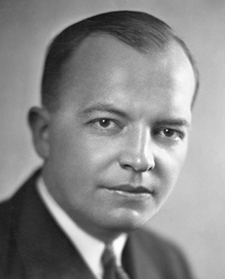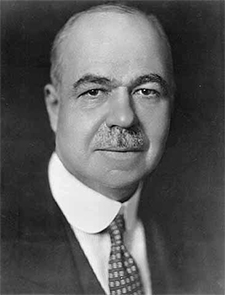On September 14, Gov. Tim Walz issued Executive Order 21-31 establishing a Governor’s Council on Economic Expansion to “reimagine Minnesota’s economic future and recommend policies and strategies for the public, private, and nonprofit sectors that will support shared economic prosperity.”
Back in 1944, amid the turmoil of World War II, another governor established a similar commission to examine Minnesota’s future and make policy recommendations. Gov. Edward Thye issued an executive order on May 10, 1944, establishing the Minnesota Resources Commission to “study the broad, underlying, basic factors having to do with the economic conditions and trends which affect the public welfare of the people of Minnesota.” The commission’s work, and the fate of its policy recommendations, provide relevant lessons for today: short-term thinking, unfortunately, often defeats long-term thinking and long-term needs.
Origins of the commission
The roots of the Minnesota Resources Commission go back to 1934 and the Great Depression. Governor Floyd B. Olson, responding to a call from the federal government to create state-level planning agencies, formed the Minnesota Planning Board. This board’s key role was to implement and coordinate federally funded measures to alleviate the Depression (e.g., Works Progress Administration construction projects) and to generate plans for future economic development.
The strategies to promote economic development were considered especially important because evidence from government statistics and business surveys indicated that Minnesota had fallen behind its neighbors in terms of average incomes and other measures since World War I. The board was also concerned that the Depression had further worsened Minnesota’s relative economic position. Thus, the board initiated a variety of research studies that examined how Minnesota stacked up against its neighbors and the nation.

Minnesota Historical Society
Harold Stassen
Minnesota’s postwar economic future
Starting in 1943, planning for a post-World War II world began to take shape at the national and international level. Edward Thye, who took office when Stassen resigned to join the Navy in April 1943, initiated a similar forward-looking effort in Minnesota using the Minnesota Resources Commission as the vehicle. As I noted earlier, Thye issued an executive order in April 1944 to focus the commission on postwar economic planning and appointed a new chair for the commission, someone who had no intention of allowing its work to languish or be ignored: James Ford Bell, who ran General Mills, one of the largest companies in Minnesota.
Bell acted quickly. He immediately hired a New York industrial consulting firm to synthesize the research already completed by the commission and they delivered a 3-volume “Economic Analysis of the State of Minnesota” in February 1945. The report, along with an executive summary written by Bell, set out the economic history of Minnesota from 1870 to 1940, a detailed examination of the state of Minnesota’s economy in 1944 and a general set of recommendations for future policies. This is long term thinking: Examine the past in order to better understand the present and to prepare for the future.

Minnesota Historical Society
James Ford Bell
Bell and his fellow commissioners urged prompt action by the governor and the legislature in 1947, but the legislature did not adopt any of the commission’s recommendations during the 1947 session. It took four more years (1951) for the legislature to repeal the personal property tax, and another twenty years (1967) until the legislature enacted a 3 percent sales tax over Gov. Harold LeVander’s veto.
During the same time, governors and other state officials formed new commissions and committees to study the same issues over and over again: the Minnesota Tax Study Commission (1954), the Governor’s State Tax Study Committee (1962), the Upper Midwest Economic Study (1964). Since 1967, there have been two tax study commissions (1985 and 1999) along with numerous reports from organizations ranging from the Citizens League to the Itasca Group. All these study groups reached a similar conclusion: the key to Minnesota’s prosperity was to invest in the citizens of the state.
There is a pattern here. As a state, we usually know what needs to be done. For example, we needed to eliminate the outdated personal property tax in the 1940s and today we need to build broadband throughout the state today. Short-term thinking pushes us to let things slide, or fear that investments cost too much money. Long-term thinking says investing money now will bring greater returns for the future. Yes, a college education costs a lot, but lifetime earnings will be far greater. Yes, broadband access for all Minnesotans will cost a lot, but it will pay off for education, business, and many aspects of modern life.
What needs to be done
Minnesota moved from a below-average income state in the 1930s to an above-average one in the 1970s through high rates of labor force participation (especially by women), investments in human capital (such as education and health care) and investments in physical capital (both by private funders and public agencies). Walz’s new Council on Economic Expansion’s Phase I Report repeats this formula, just as every panel since the Minnesota Resources Commission has done. The specifics are different but the long-term recipe for economic growth is the same: invest in our state and its people. This is long-term thinking.
We know what needs to be done. The trouble is that our long-term goals fall prey to short-term thinking and deep political and ideological divisions. The council’s mandate ends on July 1, 2022, but when they issue their final report that’s only the beginning of a long, slow process of study, education, discussion, argument, protest, and general citizen involvement that is a hallmark of healthy policymaking. If the governor wants a different outcome, he will have to expend political capital and work hard to enact the council’s recommendations during his time in office. Otherwise, it will fall to future governors and legislatures to start all over again.
The Minnesota Historical Society supported archival work on the Minnesota Resources Commission through a Legacy Research Fellowship.
"term" - Google News
December 06, 2021 at 11:25PM
https://ift.tt/3IjgSfs
Long-term thinking is they key to Minnesota's economic prosperity - MinnPost
"term" - Google News
https://ift.tt/35lXs52
https://ift.tt/2L1ho5r
Bagikan Berita Ini

















0 Response to "Long-term thinking is they key to Minnesota's economic prosperity - MinnPost"
Post a Comment